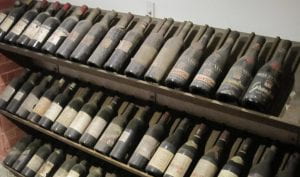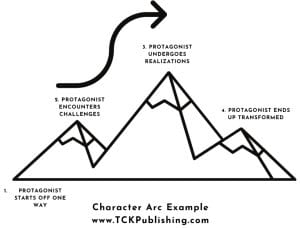 What makes a good read? Surprises and lots of them. OK, what do I mean by “surprises?” Surprises are out-of-the-blue moments that interrupt the flow of the novel and take it, or a character, in a different direction. Too many surprises and they are not surprises anymore. That’s why I only use a few, and only as necessary to enhance the plot. In my novel, the end chapters reference the kind of surprises that we enjoyed as children at Christmas time. Something like this;
What makes a good read? Surprises and lots of them. OK, what do I mean by “surprises?” Surprises are out-of-the-blue moments that interrupt the flow of the novel and take it, or a character, in a different direction. Too many surprises and they are not surprises anymore. That’s why I only use a few, and only as necessary to enhance the plot. In my novel, the end chapters reference the kind of surprises that we enjoyed as children at Christmas time. Something like this;
[“Thank you,” says Rian. “I have another surprise for you too.”
“Oh?”
“Please close your eyes.”
My senses peak. I hear the slap, slap of halyards against the yacht mast and I’m reminded of the tap, tap of Sweetman’s cane at The Rock Hotel, though that was a lifetime ago.
Seagulls squawk. I’m getting hot and the anticipation is killing me. Then, high heels come clacking across the sandstone terrace, getting louder. A shadow darkens my eyes and a tender arm wraps around my neck. The kiss is sweet and soft and the air wafts with perfume; a sexy mix of jasmine and vanilla. My mind is alive with intrigue.
“Who?” I ask.
“It’s been a while,” she replies. The voice is lilting and familiar, yet I can’t place it. I dive inside my memory banks, but they are empty except for the hint of a French accent. Was she in Paris? Damn, I used to recall names with ease and am about to ask for a clue when she says, “You can open your eyes now.”
I look up. Golden hair cascades in the sun and her face is shadowed under an old straw hat, its tattered red ribbon fluttering in the breeze. My eyes adjust and my mind catches up.
“Claudine, what a surprise and, I must say, a pleasure too.”
“My name is now Chloé Dupont,” she laughs.
“It’s been a long time. You’ve changed,” I add.
She smiles and wags a finger asking, “How have I changed?”
“You look more beautiful than ever, and happier too.” She giggles and kisses me again.
“Another glass please, Rian,” I say. “Let’s celebrate Watershed with our new guest, the lovely Chloé Dupont.” The day seems brighter. She rests her glass, tosses her hair and hands me a parcel.
“A small gift for you,” she chuckles.
“You shouldn’t have,” I protest.
Her reply puts me in my place when she says, “It’s better to give than receive.” I like that and must remember it.
The Christmas wrapping is enticing and topped with a large, yellow bow.
“I wonder what this could be?” I reply, shaking it in the way I did as an excited young boy on Christmas Eve. I loved to see the present wrapped and stacked beneath the family tree, and try to guess the contents of each one—perhaps a toy rifle for me to fight off the enemy, or a sword to cut off their heads? Better still, the whole outfit—a Lone Ranger suit, complete with mask and pistols? I made several attempts to discover the wrapped secrets. My parents never approved, but Chloé encourages me.
She laughs, “Can you guess what it is?”
“It feels solid,” I say. “A strange shape, rounded at each end.”
“Just a small keepsake,” she adds.]
I guess you want to know what the surprise is? Aha, wait for the book 🙂
 There is much debate and mystery to the idea of having to turn wine bottles to improve their flavour and consistency.
There is much debate and mystery to the idea of having to turn wine bottles to improve their flavour and consistency.
 The Doomsday Clock was set at two minutes to midnight in 2019 and at 100 seconds to midnight in 2022. Last year, we expressed our heightened concern by moving the Clock to 90 seconds to midnight—the closest to global catastrophe it has ever been—in large part because of Russian threats to use nuclear weapons in the war in Ukraine. How does this affect my book. Well, during the editorial phase, I had to adjust the Doomsday Clock in my manuscript too. Check out this extract:
The Doomsday Clock was set at two minutes to midnight in 2019 and at 100 seconds to midnight in 2022. Last year, we expressed our heightened concern by moving the Clock to 90 seconds to midnight—the closest to global catastrophe it has ever been—in large part because of Russian threats to use nuclear weapons in the war in Ukraine. How does this affect my book. Well, during the editorial phase, I had to adjust the Doomsday Clock in my manuscript too. Check out this extract:
 I’m going to struggle with a sensible answer, but here goes. I keep trying because I want to reach the greatest audience and I keep trying because I want my heist-thriller to be as polished as possible, which will not happen if I self-publish. Oh, there are many other illogical reasons too :-). Have I felt like giving up? Yes, and even more in recent days. Having a request for my full manuscript created hope to land a literary agent, but this was followed four weeks later by a “No.” After this glimmer of hope it was back to a full re-edit, and chapter reorganisation, before sending out a few more submissions. The recent rise of Artificial Intelligence, and a huge global interest in deep-sea submersibles (with the Titan implosion) should help propel my novel. I’m just waiting for a literary agent to agree.
I’m going to struggle with a sensible answer, but here goes. I keep trying because I want to reach the greatest audience and I keep trying because I want my heist-thriller to be as polished as possible, which will not happen if I self-publish. Oh, there are many other illogical reasons too :-). Have I felt like giving up? Yes, and even more in recent days. Having a request for my full manuscript created hope to land a literary agent, but this was followed four weeks later by a “No.” After this glimmer of hope it was back to a full re-edit, and chapter reorganisation, before sending out a few more submissions. The recent rise of Artificial Intelligence, and a huge global interest in deep-sea submersibles (with the Titan implosion) should help propel my novel. I’m just waiting for a literary agent to agree. What makes a good read? Surprises and lots of them. OK, what do I mean by “surprises?” Surprises are out-of-the-blue moments that interrupt the flow of the novel and take it, or a character, in a different direction. Too many surprises and they are not surprises anymore. That’s why I only use a few, and only as necessary to enhance the plot. In my novel, the end chapters reference the kind of surprises that we enjoyed as children at Christmas time. Something like this;
What makes a good read? Surprises and lots of them. OK, what do I mean by “surprises?” Surprises are out-of-the-blue moments that interrupt the flow of the novel and take it, or a character, in a different direction. Too many surprises and they are not surprises anymore. That’s why I only use a few, and only as necessary to enhance the plot. In my novel, the end chapters reference the kind of surprises that we enjoyed as children at Christmas time. Something like this; The one sentence pitch is the essence or heart of a book, the line that tells people about your book and makes it sound awesome.
The one sentence pitch is the essence or heart of a book, the line that tells people about your book and makes it sound awesome.